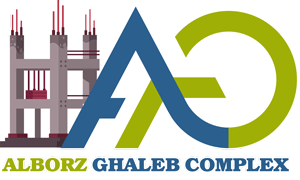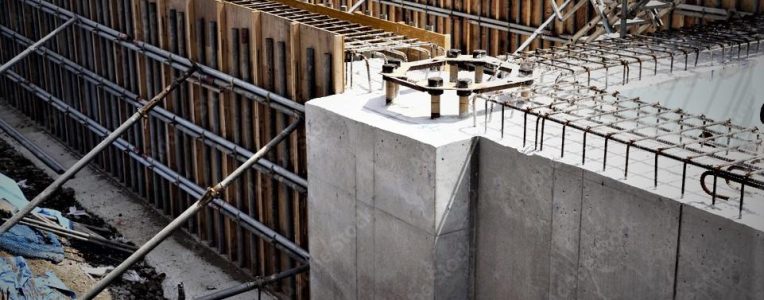Concrete formwork is a critical component in modern construction, providing a temporary mold or framework into which concrete is poured to achieve the desired shape and strength. Whether you’re constructing buildings, bridges, tunnels, or sidewalks, choosing the right formwork system is essential for ensuring structural integrity, safety, and cost-efficiency. In this detailed guide, we’ll explore what concrete formwork is, its purpose, the different types available, their advantages and disadvantages, and key factors to consider when selecting the best system for your project.
What is Concrete Formwork?
Concrete formwork refers to the temporary or permanent molds used to hold wet concrete in place until it hardens into the desired shape. These molds, made from materials like wood, metal, plastic, or fiberglass, are designed to withstand the weight and pressure of the concrete while ensuring precision in the final structure.
The primary goal of formwork is to create a precise framework that supports the concrete during the curing process, ensuring it adheres to the architectural and engineering specifications. Formwork also plays a vital role in maintaining safety on construction sites by preventing the concrete from deforming or spilling.
For advanced formwork solutions, explore Alborz Ghaleb’s concrete formwork systems, designed for durability and precision in various construction projects.
Purpose of Concrete Formwork
The main purposes of concrete formwork include:
- Shaping the Concrete: Formwork ensures that the concrete takes on the exact shape and dimensions specified in the design plans.
- Supporting Wet Concrete: It holds the concrete in place during the curing process, preventing deformation or collapse.
- Ensuring Safety: Properly designed formwork enhances worker safety by withstanding the weight and pressure of the concrete.
- Improving Efficiency: Well-designed formwork systems reduce construction time and labor costs by simplifying the pouring and curing process.
Types of Concrete Formwork
Concrete formwork comes in various types, each suited to specific project requirements. Below, we discuss the most common types and their applications.
Wooden Formwork
Wooden formwork is one of the most traditional and widely used systems, particularly for small to medium-sized projects. Made from timber, plywood, or other wood-based materials, wooden formwork is cost-effective and easy to customize.
- Applications: Walls, columns, slabs, and staircases in residential and commercial buildings.
- Advantages: Low cost, easy to fabricate, customizable, and locally available.
- Disadvantages: Susceptible to moisture and heat, prone to warping, and requires regular maintenance.
Metal Formwork
Metal formwork, typically made from steel or aluminum, is ideal for large-scale and complex projects requiring high durability and precision. These systems are reusable and provide a smooth finish to the concrete surface.
Discover Alborz Ghaleb’s modular metal formwork for robust and reusable solutions tailored to large-scale construction.
- Applications: Bridges, dams, tunnels, and high-rise buildings.
- Advantages: High durability, reusable, easy to adjust, and provides a smooth finish.
- Disadvantages: Heavy, requires heavy machinery for installation, and may cause heat loss in concrete.
Plastic Formwork
Plastic formwork is a lightweight and versatile option, often made from materials like polyester, polyvinyl chloride (PVC), or polycarbonate. It is particularly suited for projects with curved or intricate designs.
Learn more about Alborz Ghaleb’s plastic formwork systems, perfect for decorative and complex structures.
- Applications: Sidewalks, decorative structures, and curved architectural elements.
- Advantages: Lightweight, resistant to harsh weather, easy to shape, and low maintenance.
- Disadvantages: Sensitive to UV light and heat, limited load-bearing capacity, and less suitable for complex structural forms.
Fiberglass Formwork
Fiberglass formwork, made from glass fibers and polyester resin, is a premium option for projects requiring repetitive or complex shapes. Its lightweight and corrosion-resistant properties make it a popular choice for specialized applications.
- Applications: Bridges, dams, tunnels, and decorative structures.
- Advantages: Lightweight, high strength, corrosion-resistant, and reusable with minimal maintenance.
- Disadvantages: High initial cost and potential for surface scratches during handling.
Advantages of Different Formwork Systems
Each type of formwork offers unique benefits that make it suitable for specific construction scenarios. Here’s a detailed look at the advantages of each system:
Wooden Formwork Benefits
Wooden formwork is favored for its affordability and flexibility. Its key benefits include:
- Cost-Effective: Lower material and fabrication costs make it ideal for budget-conscious projects.
- Customizable: Easily cut and shaped to meet specific design requirements.
- Locally Available: Wood is widely available, reducing transportation costs.
- Reusable: With proper care, wooden formwork can be reused for multiple pours.
Metal Formwork Benefits
Metal formwork is the go-to choice for large-scale projects due to its durability and precision. Its advantages include:
- High Durability: Resistant to wear and tear, making it suitable for long-term use.
- Reusable: Can be used hundreds of times, reducing overall costs.
- Smooth Finish: Provides a high-quality surface finish, reducing the need for additional plastering.
- Easy to Adjust: Modular designs allow for quick assembly and disassembly.
Plastic Formwork Benefits
Plastic formwork is ideal for projects requiring lightweight and weather-resistant systems. Its benefits include:
- Lightweight: Easy to handle and transport, reducing labor costs.
- Weather-Resistant: Unaffected by moisture or extreme weather conditions.
- Low Maintenance: Requires minimal upkeep compared to wooden or metal systems.
- Flexible Design: Easily molded into complex shapes for decorative purposes.
Fiberglass Formwork Benefits
Fiberglass formwork is a premium option for specialized projects. Its advantages include:
- High Strength-to-Weight Ratio: Lightweight yet strong enough to handle heavy loads.
- Corrosion Resistance: Ideal for harsh environments like coastal areas.
- Minimal Maintenance: No need for frequent repairs or treatments.
- Reusable: Can be reused for repetitive designs, reducing long-term costs.
Disadvantages of Different Formwork Systems
While each formwork type has its strengths, there are also limitations to consider when selecting the right system for your project.
Wooden Formwork Drawbacks
Despite its affordability, wooden formwork has some notable disadvantages:
- Moisture Sensitivity: Prone to warping or rotting when exposed to water.
- Limited Lifespan: Less durable than metal or fiberglass systems.
- Maintenance Costs: Requires regular repairs and treatments to maintain quality.
Metal Formwork Drawbacks
Metal formwork’s durability comes with some trade-offs:
- Heavy Weight: Requires cranes or heavy machinery for installation.
- Heat Conductivity: Can cause heat loss in concrete, affecting curing quality.
- Higher Initial Cost: More expensive upfront compared to wooden formwork.
Plastic Formwork Drawbacks
Plastic formwork’s lightweight design has its limitations:
- UV Sensitivity: Prolonged exposure to sunlight can cause degradation.
- Limited Load Capacity: Not suitable for heavy structural applications.
- Shape Limitations: Less effective for highly complex structural designs.
Fiberglass Formwork Drawbacks
Fiberglass formwork’s premium features come with some challenges:
- High Cost: Expensive to produce, making it less viable for small projects.
- Surface Scratching: Hard surfaces may scratch the concrete during removal.
- Specialized Handling: Requires careful handling to avoid damage.
Factors to Consider When Choosing Formwork
Selecting the right formwork system requires careful consideration of several factors to ensure project success. Here are the key factors to evaluate:
Size and Shape of the Structure
The dimensions and complexity of the structure dictate the type of formwork needed. Simple rectangular structures may use wooden or metal formwork, while curved or intricate designs may require plastic or fiberglass systems.
Type of Concrete
The concrete mix used in the project affects formwork selection. For example, low water-to-cement ratio concrete requires smooth, high-strength formwork to achieve a polished finish.
Environmental Conditions
Weather and site conditions play a significant role in formwork performance. In hot, dry climates, metal formwork may cause concrete to cure unevenly, while plastic or fiberglass systems are better suited for humid or coastal environments.
Formwork Strength
The formwork must be strong enough to withstand the weight and pressure of the wet concrete. High-strength concrete mixes require robust formwork systems like metal or fiberglass.
Budget and Project Scale
Budget constraints and project size influence formwork choice. Wooden formwork is ideal for small, budget-conscious projects, while metal or fiberglass systems are better for large-scale or long-term projects.
Best Practices for Concrete Formwork
To maximize the efficiency and effectiveness of your formwork system, follow these best practices:
Use Adjustable Formwork
Adjustable formwork systems allow for quick modifications to shape and size, making them ideal for complex or custom designs.
Opt for Modular Systems
Modular formwork, such as Alborz Ghaleb’s metal modular systems, simplifies assembly and disassembly for large or repetitive structures.
Choose Smooth Surfaces
Formwork with polished surfaces ensures a high-quality concrete finish, reducing the need for additional surface treatments.
Use Non-Stick or Lubricated Surfaces
Non-stick or lubricated formwork prevents concrete from adhering to the mold, making removal easier and reducing damage to the formwork.
Prioritize Safety
Ensure that the formwork is designed to handle the concrete’s weight and pressure while providing a safe working environment for construction crews.
Conclusion
Concrete formwork is an indispensable part of modern construction, enabling the creation of precise, durable, and safe structures. By understanding the different types of formwork—wooden, metal, plastic, and fiberglass—and their respective advantages and disadvantages, you can make informed decisions that align with your project’s needs, budget, and environmental conditions. Whether you’re working on a small residential project or a large infrastructure development, choosing the right formwork system is key to achieving high-quality results.


